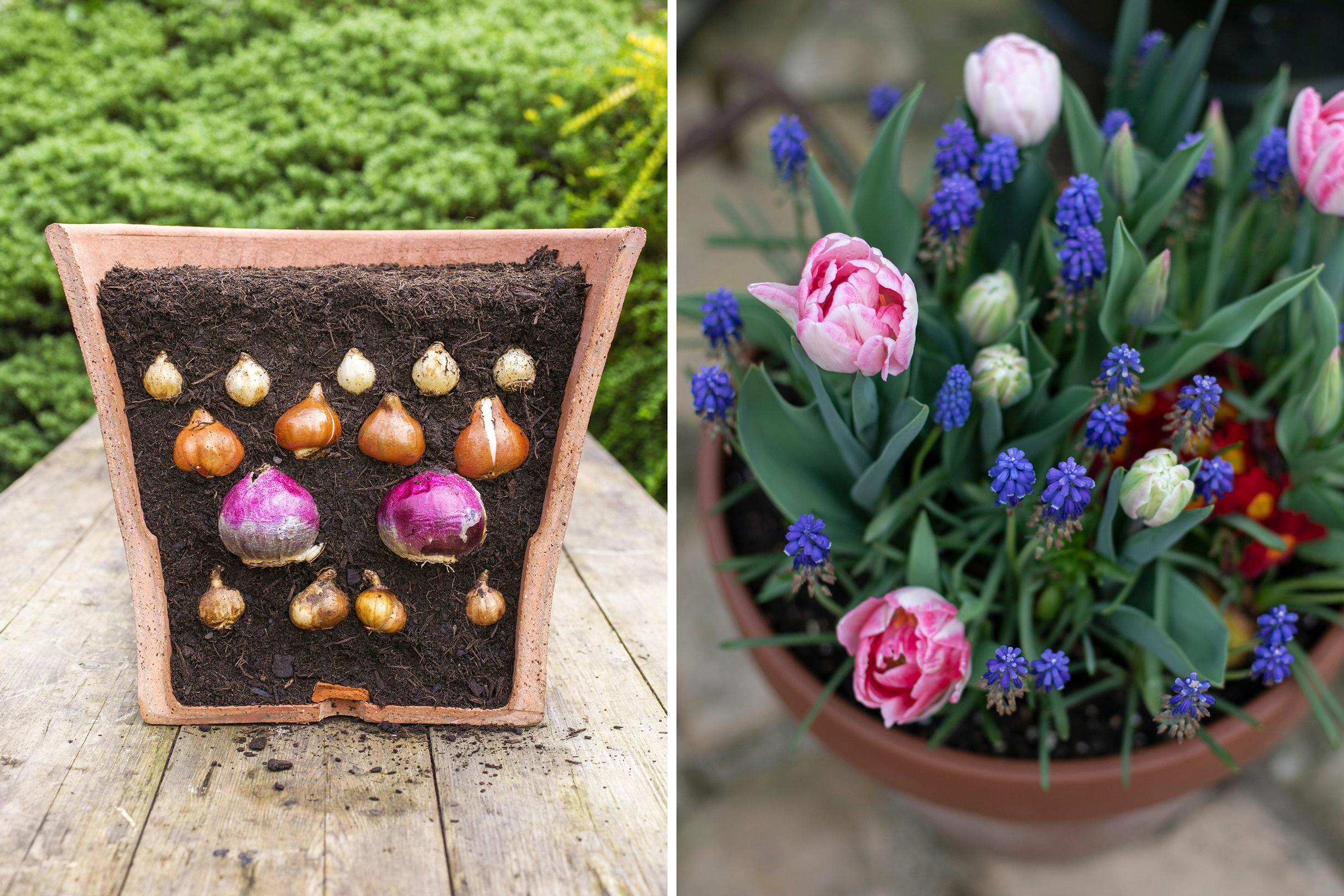
Layered bulb lasagna: a joyful spring show in one pot
You’re in for plenty of charming blooms next spring by layering flower bulbs in a pot. You can combine small bulb flowers, daffodils, tulips, ornamental alliums, and hyacinths in one container.
How to plant a bulb lasagna
1. Get to work in October or even November, because bulbs planted too early may start growing prematurely in the fall.
2. Ensure proper drainage in a large pot with old pot shards so water can drain away.
3. Fill the pot with sand-mixed soil (regular garden soil from a bag works too) and plant your bulbs in layers. Place them side by side for a lush final display, but make sure they don’t touch each other.
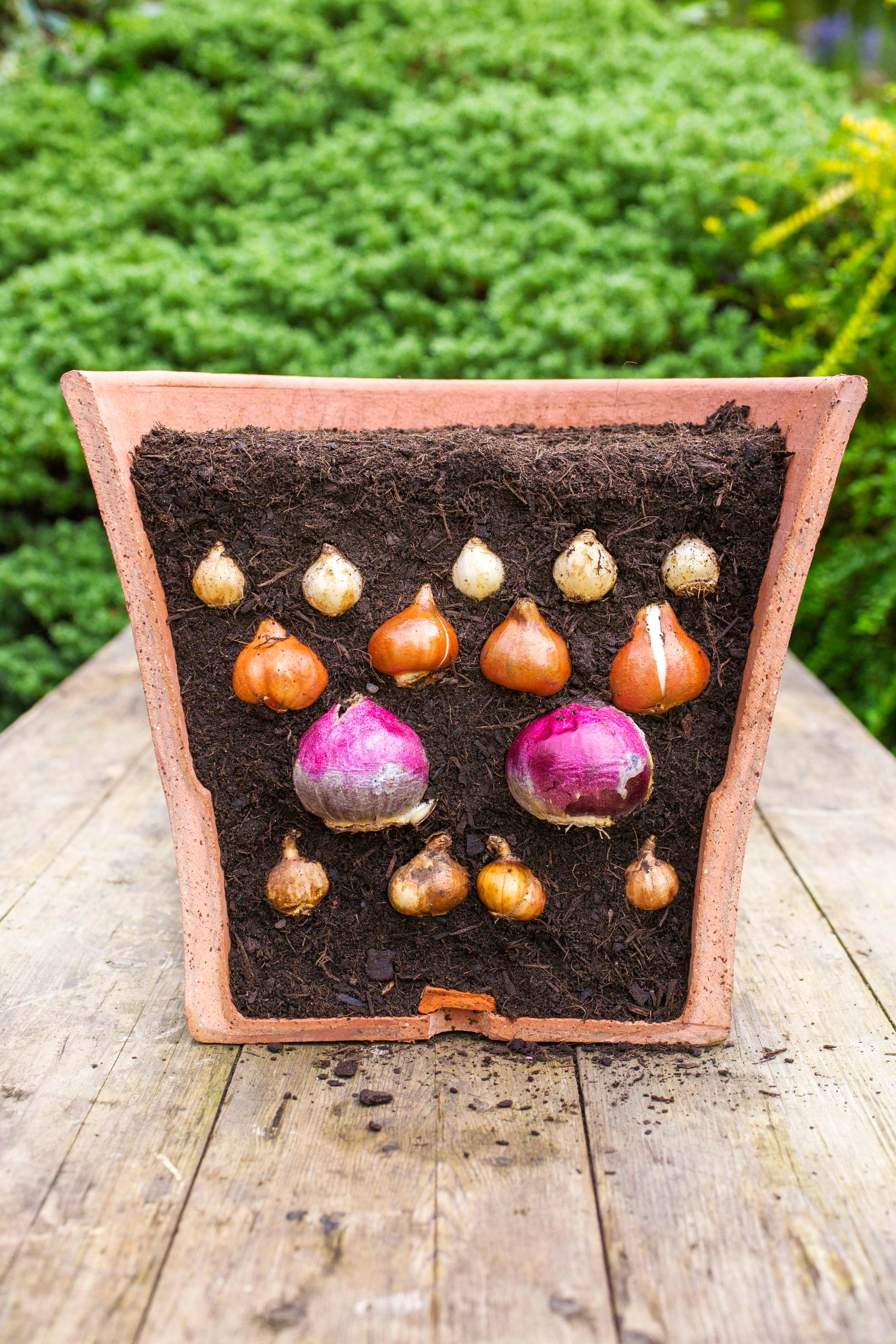
4. Place bulbs of larger, later-blooming plants deeper in the pot, and keep smaller, earlier-blooming bulbs (such as crocuses, grape hyacinths, and early bulbous irises) closer to the surface.
Height, abundance, and stunning plant combinations
The idea behind bulb lasagna planting is not only to combine different plants but also to achieve a long flowering period and plenty of blooms.
A prolonged bloom emerges when bulbs flower in layers: small bulbs planted near the surface bloom in early spring, followed by the next layer’s daffodils, and so on.
Planting depth, however, is not the only factor at play. The type and variety of bulb also affects the blooming schedule. For instance, some tulip species and varieties start blooming in April, while others won’t open until mid-June.
You can also create a lasagna planting using just one variety. In that case, the aim is not necessarily a prolonged bloom, but rather a lush and impressive display. Indeed, you can fit a large number of bulbs into a single pot by layering them. For example, the English garden guru Sarah Raven plants 45 tulip bulbs in three layers—15 in each—into a single pot in her stunning lasagna plantings. Layering also extends the flowering period of the same tulip variety, because the bulbs in the lowest layer will likely bloom a bit later than those above them.
Putting together lasagna plantings is great fun, and you’ll find the right combinations by experimenting with container plantings over several years. Pay attention not only to flowering times, but also to colors, flower shapes, and the length of stems. You can find gorgeous bulb combinations in this article [in Finnish].
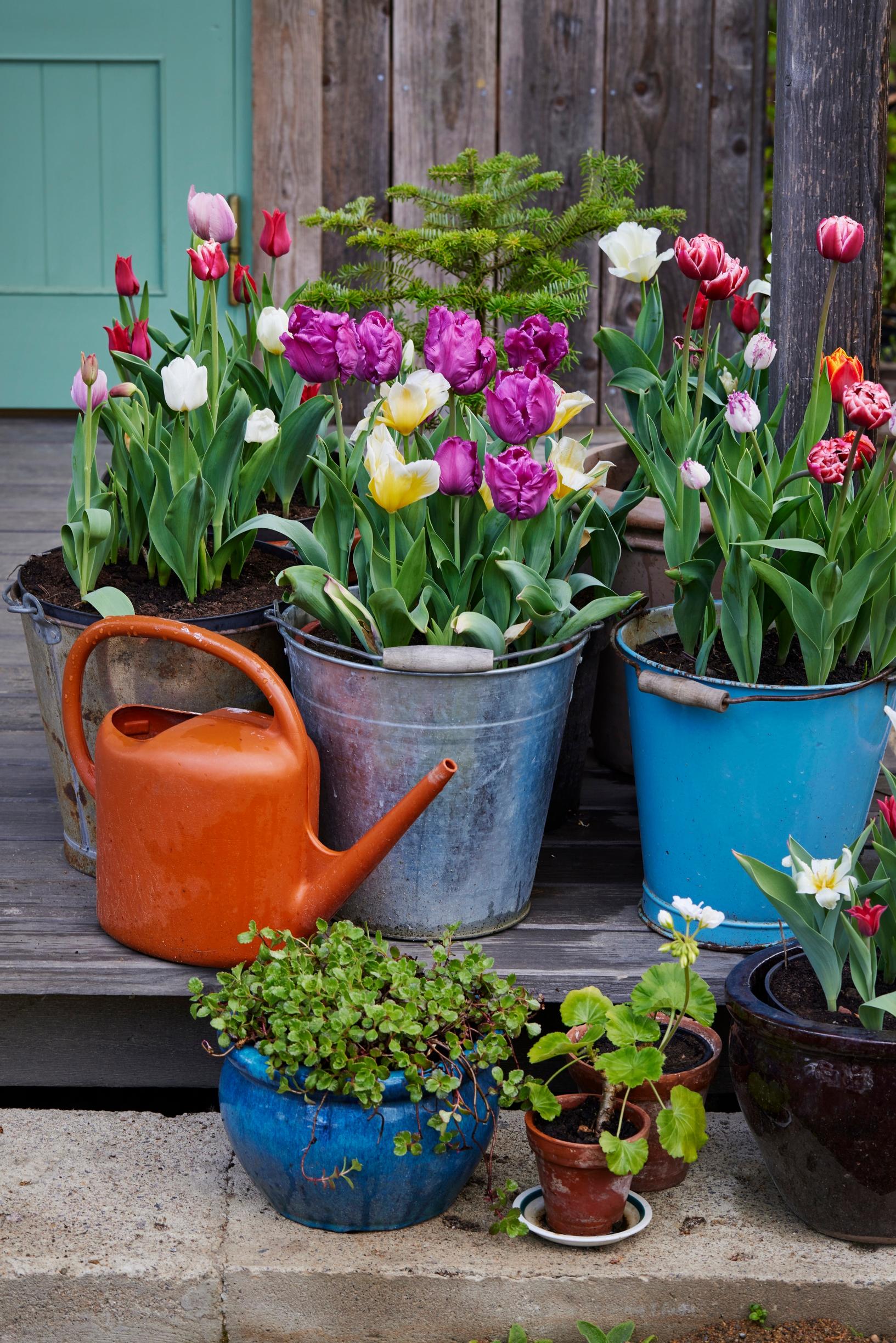
5. After planting, water lightly if needed, including during winter. Flower bulbs suffer in waterlogged soil, but don’t let the soil dry out completely either.
6. Place the pot in a cellar at around 5–10 °C (41–50 °F) for the winter. If you keep it in an unheated storage space or on a balcony, wrap it in polystyrene. If you try storing it on a balcony, ensure the pot is covered or under a roof, as excessive moisture can destroy the bulbs.
7. Bring the pot into the light in spring. Control the flowering time by how early or late you move the pot out of the cellar or storage.
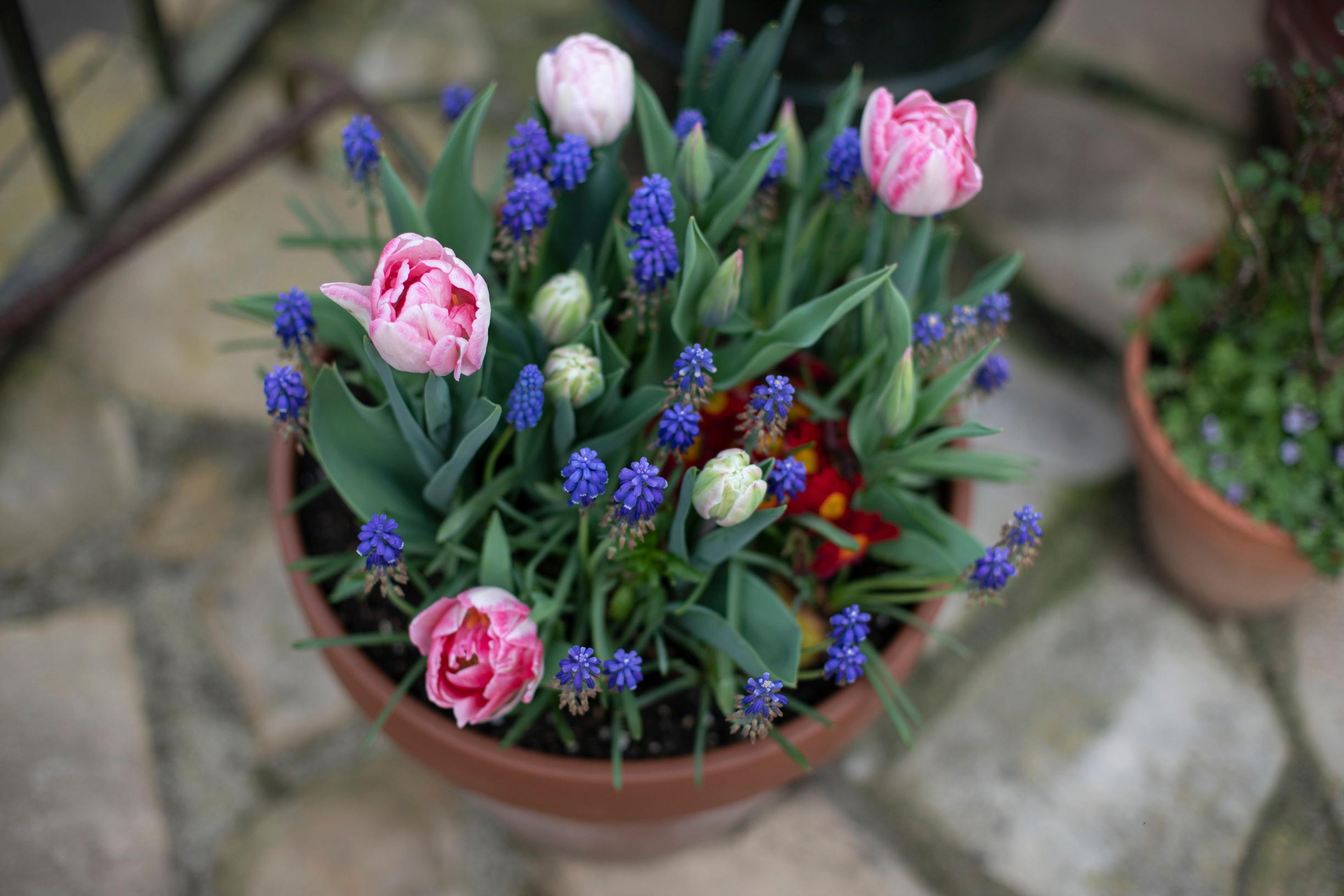
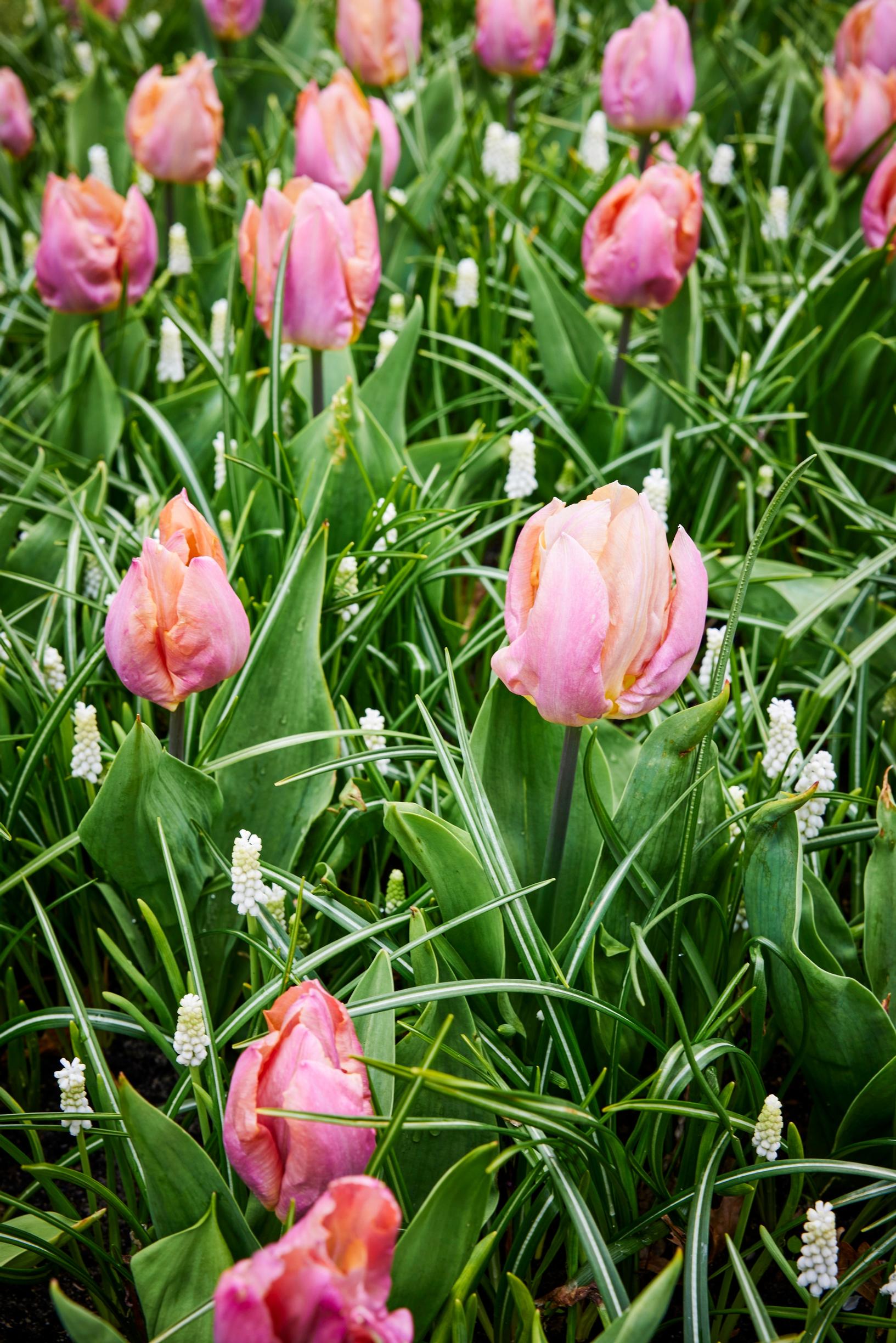
Height, planting depth, and flowering time of bulb flowers
These figures are approximate but help in planning a multi-species planting. Flowering times also depend on the plant species or variety, the growing location, and the progression of spring. Species and variety will influence the plants’ height as well. Variation is especially large among tulips, daffodils, and ornamental alliums.
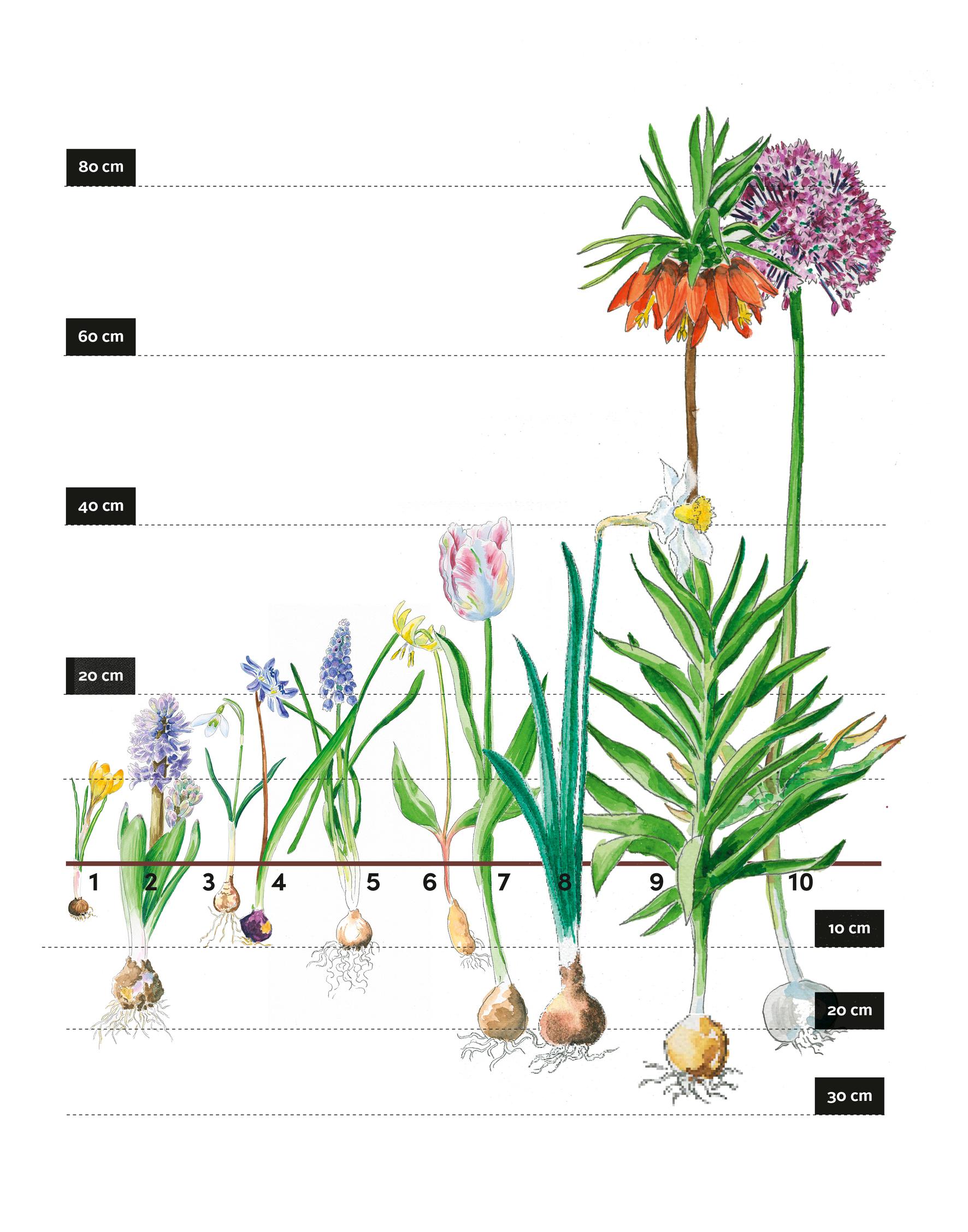
1. Crocus flowers in April–May
2. Hyacinth in May
3. Snowdrop in April
4. Squill in May
5. Grape hyacinth in May
6. Dog's tooth violet in April–May
7. Tulip in May–June
8. Daffodil in May–June
9. Crown imperial in May
10. Dutch garlic in June
Source: Sarah Raven, A Year Full of Flowers, Bloomsbury Publishing 2021.


